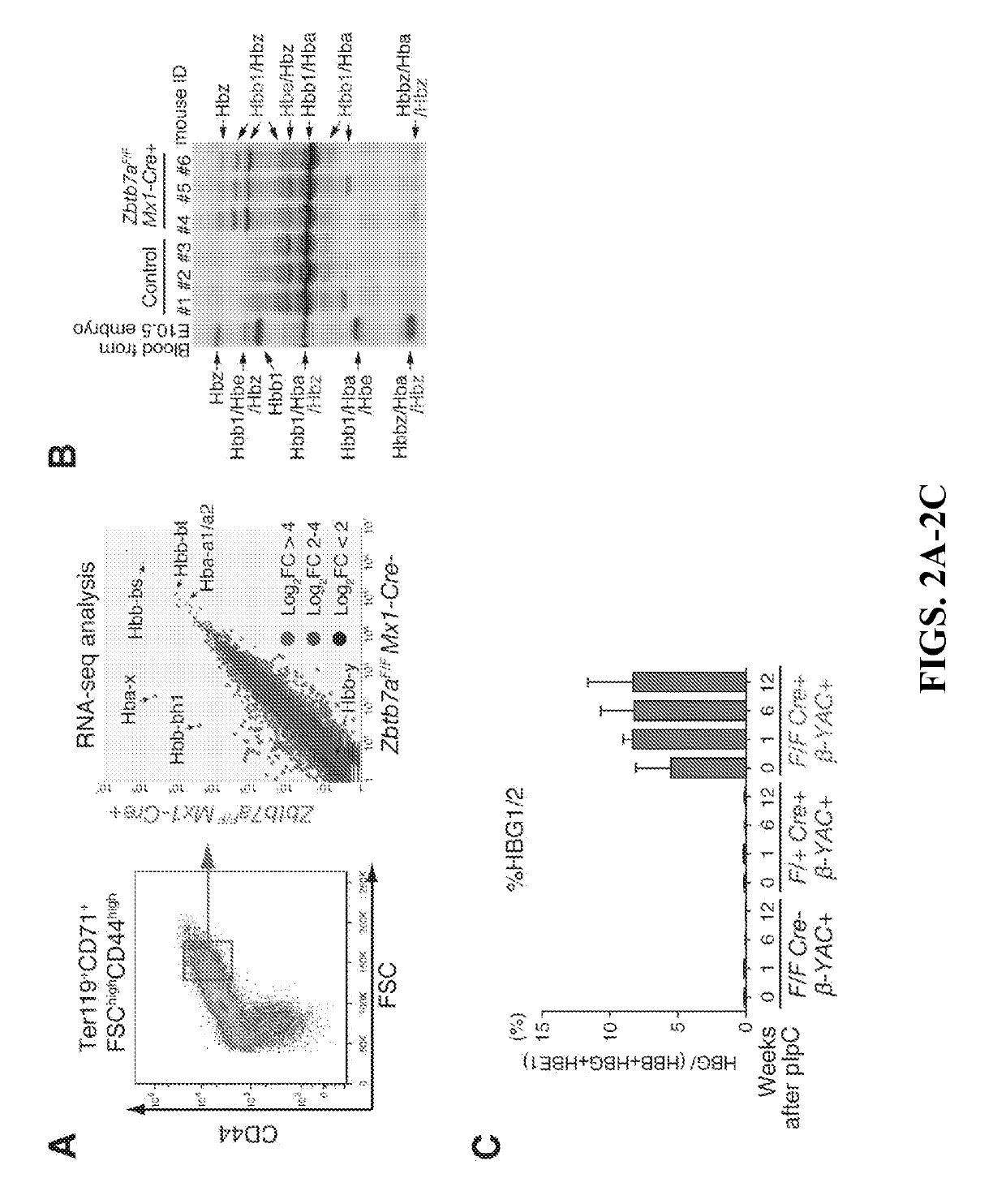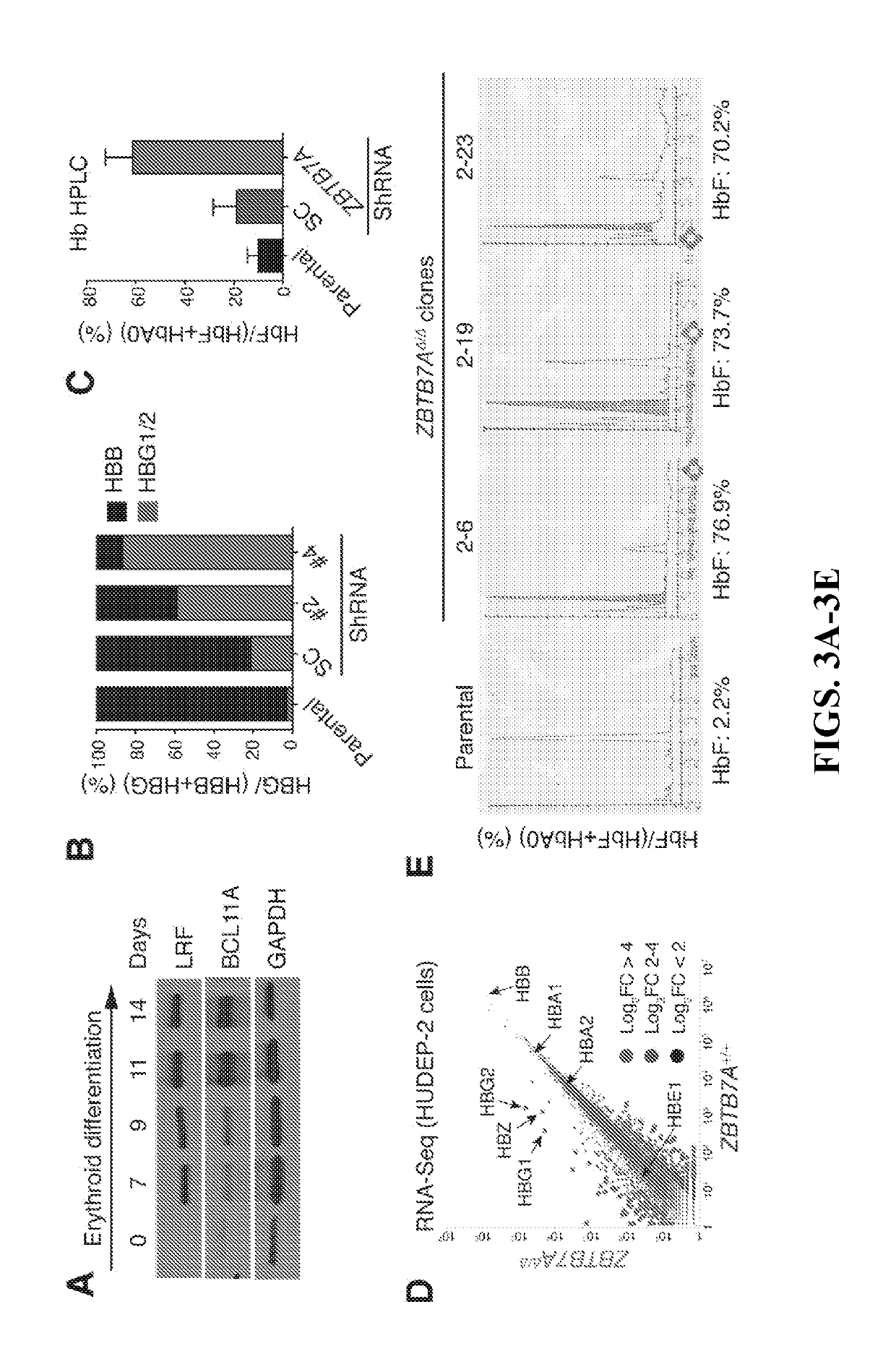Methods for identifying and treating hemoglobinopathies
- Summary
- Abstract
- Description
- Claims
- Application Information
AI Technical Summary
Benefits of technology
Problems solved by technology
Method used
Image
Examples
examples
[0259]Targeted Approach: Protein-Fragment Complementation Assay (PCA)
[0260]A Y2H screen identified CHD3 aa1181-1378 as the CHD3 / LRF-BTB binding domain (CHD3-LBD). Applicants hypothesized that overexpression of CHD3-LBD competitively inhibits endogenous LRF / CHD3 binding, unlocking γ-globin silencing. Applicants determine the minimal interaction fragment in the CHD3-LBD. To do so, a series of N- and C-terminal deletion mutants of the CHD3-LBD are generated and the binding of these fragments to the LRF-BTB domain are assessed by an in vitro binding assay. Applicants validate the relative strengths of interactions between the CHD3-LBD fragments and the LRF-BTB domain by surface plasmon resonance (SPR) biosensor measurements as described (Ahmad K F, Melnick A, Lax S, Bouchard D, Liu J, et al. Mechanism of SMRT corepressor recruitment by the BCL6 BTB domain. Mol Cell. 2003; 12:1551-1564). The minimal peptide fragment within the CHD3-LBD is identified, and the crystal structure of the LRF-...
PUM
| Property | Measurement | Unit |
|---|---|---|
| Fraction | aaaaa | aaaaa |
| Fraction | aaaaa | aaaaa |
| Current | aaaaa | aaaaa |
Abstract
Description
Claims
Application Information
 Login to View More
Login to View More - R&D
- Intellectual Property
- Life Sciences
- Materials
- Tech Scout
- Unparalleled Data Quality
- Higher Quality Content
- 60% Fewer Hallucinations
Browse by: Latest US Patents, China's latest patents, Technical Efficacy Thesaurus, Application Domain, Technology Topic, Popular Technical Reports.
© 2025 PatSnap. All rights reserved.Legal|Privacy policy|Modern Slavery Act Transparency Statement|Sitemap|About US| Contact US: help@patsnap.com



